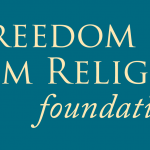New survey by Marquette Law School Poll finds Wisconsin Democratic primary for U.S. Senate tightening, Kleefisch leading Republican gubernatorial primary; among Republicans, those least confident in 2020 election are more enthusiastic to vote this fall
Please note: Complete Poll results and methodology information can be found online at law.marquette.edu/poll
MILWAUKEE — A new Marquette Law School Poll survey of Wisconsin finds a tighter Democratic primary for U.S. Senate than in February. In the primary contest, Lt. Gov. Mandela Barnes is supported by 19% of Democrats (including independents who lean Democratic) and independents who say they will vote in the Democratic primary, while Alex Lasry is supported by 16%. Sarah Godlewski is the choice of 7%, and Tom Nelson holds 5%. The other seven candidates received 1% or less support.
In the February poll, Barnes was the choice of 23%, while Lasry was favored by 13%. Nelson was the choice of 5% and Godlewski of 3%, with others receiving 2% or less.
Table 1 shows the full results of the April and February polls for the Democratic primary. (All results in the tables are stated as percentages; the precise wording of the questions can be found in the online link noted above.)
Table 1: Preferences of Democratic primary voters, Feb. and April 2022
| Primary choice | April | February |
| Mandela Barnes | 19 | 23 |
| Alex Lasry | 16 | 13 |
| Sarah Godlewski | 7 | 3 |
| Tom Nelson | 5 | 5 |
| Peter Peckarsky | 1 | * |
| Chantia Lewis | 1 | 2 |
| Adam Murphy | * | 2 |
| Darrell Williams | * | * |
| Kou Lee | 0 | 0 |
| Steven Olikara | 0 | 0 |
| Jeff Rumbaugh | 0 | 0 |
| Won’t vote in this primary | 3 | 3 |
| Don’t know | 48 | 48 |
| Refused | 1 | 1 |
| * indicates less than .5% but more than 0 | ||
The survey was conducted April 19-24, 2022, interviewing 805 Wisconsin registered voters, with a margin of error of +/-4.1 percentage points. The margin of error for 363 likely Democratic primary voters is 6.6 points and for 375 Republican likely primary voters is 5.6 points.
This poll was begun before Tim Michels announced his entry into the Republican gubernatorial primary, and so respondents were not asked about him. Rebecca Kleefisch had the support of 32%, Kevin Nicholson 10%, and Tim Ramthun 4%, while 46% said they did not know whom they would support. Table 2 shows the GOP primary preferences in April and in February.
Table 2: Preferences of Republican primary voters, Feb. and April 2022
| Primary choice | April | February |
| Rebecca Kleefisch | 32 | 30 |
| Kevin Nicholson | 10 | 8 |
| Tim Ramthun | 4 | 5 |
| Someone else | 3 | 1 |
| Will not vote in Republican primary | 3 | 1 |
| Don’t know | 46 | 54 |
| Refused | 1 | 2 |
Confidence in election accuracy
Doubt about the accuracy of the 2020 election results has been a major issue for Republicans since former President Donald Trump questioned the outcome after that election. In Wisconsin, about two-thirds of Republicans have expressed little or no confidence in that election result.
Table 3 shows confidence in the April 2022 election by party identification. In the analysis here and below, each party includes those independents who lean to the party, while independents are those who do not identify with or lean to either party. Democrats are much more likely to say they are very confident than either independents or Republicans, but no more than a quarter of any party group say they are not too confident or not at all confident in the spring election. More than three-quarters of Republicans, 76%, report themselves as very or somewhat confident in the accuracy of this election.
Table 3: Confidence in accuracy of April 2022 election, by party, April 2022
| Party ID | Very confident | Somewhat confident | Not too confident | Not at all confident | Don’t know |
| Republican | 32 | 44 | 10 | 11 | 3 |
| Independent | 34 | 33 | 10 | 15 | 7 |
| Democrat | 77 | 19 | 2 | 1 | 1 |
In contrast, doubts about the 2020 election remain higher, especially among Republicans. Respondents were asked, “How confident are you that, here in Wisconsin, the votes for president were accurately cast and counted in the 2020 election?” Looking back at 2020, 48% of all respondents say they are very confident in the results and 16% are somewhat confident, while 12% are not too confident and 23% are not at all confident. The partisan divide is especially sharp, and much greater than for the April 2022 election, as shown in Table 4. Almost three times as many Republicans have low confidence in the 2020 result as doubt the April 2022 outcome: 62% compared to 21%, respectively.
Table 4: Confidence in accuracy of November 2020 election, by party, April 2022
| Party ID | Very confident | Somewhat confident | Not too confident | Not at all confident | Don’t know |
| Republican | 15 | 21 | 21 | 41 | 1 |
| Independent | 36 | 23 | 11 | 27 | 2 |
| Democrat | 85 | 9 | 3 | 3 | 1 |
Gableman election investigation
Thirteen percent of Wisconsin voters approve of how former state supreme court justice Michael Gableman has handled a review of the 2020 election, while 27% disapprove. More than half, 57%, say they haven’t heard enough about the review to have an opinion, and another 2% say they don’t know. Table 5 shows approval of the Gableman investigation since Oct. 2021.
Table 5: Approval of Gableman election review, by survey, Oct. 2021 & April 2022
| Poll dates | Approve | Disapprove | Haven’t heard enough | Don’t know |
| 10/26-31/21 | 11 | 22 | 65 | 2 |
| 4/19-24/22 | 13 | 27 | 57 | 2 |
Given the much higher level of doubt about the 2020 election among Republicans, it is striking that most Republicans are unlikely to have an opinion of the investigation by Gableman. Table 6 shows opinion of the election review, by party. Nearly two-thirds of Republicans, 64%, say they haven’t heard enough to have an opinion, while just over half of Democrats, 50%, haven’t heard enough.
Table 6: Approval of Gableman election review, by party identification, April 2022
| Party ID | Approve | Disapprove | Haven’t heard enough | Don’t know |
| Republican | 21 | 13 | 64 | 2 |
| Independent | 14 | 23 | 58 | 2 |
| Democrat | 4 | 43 | 50 | 2 |
Decertifying the 2020 election
When asked if the legislature should vote to “decertify” the results of the 2020 presidential election, 25% say it should vote to do that, while 62% say it should not and 12% say they do not know. Opinion about decertifying the election, by party identification, is shown in Table 7.
Table 7: Decertify 2020 presidential election, by party, April 2022
| Party ID | Should decertify | Should not act to decertify | Don’t know |
| Republican | 36 | 50 | 12 |
| Independent | 27 | 51 | 21 |
| Democrat | 13 | 78 | 8 |
Enthusiasm to vote
Republicans and Democrats are about equally enthusiastic about voting in the November elections, with 57% of Republicans and 57% of Democrats saying they are very enthusiastic.
This close balance in enthusiasm was also present in 2020, though with greater enthusiasm in both parties. Across all 2020 Marquette Law School Poll surveys, 67% of Republicans and 69% of Democrats said they were very enthusiastic.
The recent trend in enthusiasm by party is shown in Table 8.
Table 8: Enthusiasm to vote in 2022 election, Oct. 2021-April 2022
| Party ID | Poll dates | Very enthusiastic | Somewhat enthusiastic | Not too enthusiastic | Not at all enthusiastic | Don’t know |
| Republican | 10/26-31/21 | 63 | 21 | 9 | 6 | 2 |
| Republican | 2/22-27/22 | 58 | 22 | 11 | 7 | 1 |
| Republican | 4/19-24/22 | 57 | 24 | 9 | 9 | 1 |
| Independent | 10/26-31/21 | 43 | 22 | 10 | 23 | 2 |
| Independent | 2/22-27/22 | 43 | 30 | 10 | 14 | 4 |
| Independent | 4/19-24/22 | 35 | 32 | 15 | 14 | 5 |
| Democrat | 10/26-31/21 | 59 | 25 | 9 | 5 | 1 |
| Democrat | 2/22-27/22 | 56 | 25 | 12 | 5 | 2 |
| Democrat | 4/19-24/22 | 57 | 27 | 6 | 8 | 1 |
Among Republicans, those who are least confident in the accuracy of the 2020 are more enthusiastic to vote in 2022, while those most confident in the election result are less enthusiastic to vote. Table 9 shows the relationship, combining the three polls since Oct. 2021.
Table 9: Enthusiasm to vote in 2022 election, by confidence in 2020 election, among Republicans, Oct. 2021-April 2022
| Confidence in 2020 | Very enthusiastic | Somewhat enthusiastic | Not too enthusiastic | Not at all enthusiastic | Don’t know |
| Very confident | 46 | 25 | 17 | 12 | 0 |
| Somewhat confident | 52 | 26 | 15 | 5 | 2 |
| Not too confident | 61 | 28 | 7 | 3 | 1 |
| Not at all confident | 69 | 16 | 5 | 9 | 1 |
Opinions of Gov. Tony Evers
Approval of how Democratic Gov. Tony Evers is handling his job as governor stands at 49% in April, with 43% disapproval and 7% saying they don’t know. Table 10 shows the trend in Evers’ job approval since 2020.
Table 10: Evers job approval, 2019-2022
| Poll dates | Approve | Disapprove | Don’t know |
| 1/16-20/19 | 39 | 22 | 38 |
| 4/3-7/19 | 47 | 37 | 15 |
| 8/25-29/19 | 54 | 34 | 10 |
| 10/13-17/19 | 52 | 34 | 13 |
| 11/13-17/19 | 47 | 42 | 10 |
| 12/3-8/19 | 50 | 38 | 11 |
| 1/8-12/20 | 51 | 40 | 9 |
| 2/19-23/20 | 51 | 38 | 10 |
| 3/24-29/20 | 65 | 29 | 6 |
| 5/3-7/20 | 59 | 33 | 7 |
| 6/14-18/20 | 54 | 38 | 6 |
| 8/4-9/20 | 57 | 37 | 6 |
| 8/30-9/3/20 | 51 | 43 | 5 |
| 9/30-10/4/20 | 52 | 42 | 5 |
| 10/21-25/20 | 50 | 43 | 7 |
| 8/3-8/21 | 50 | 43 | 7 |
| 10/26-31/21 | 45 | 46 | 8 |
| 2/22-27/22 | 50 | 41 | 8 |
| 4/19-24/22 | 49 | 43 | 7 |
Sixty percent approve of the way Evers has handled the coronavirus outbreak, while 38% disapprove and 2% say they don’t know. The trend since the outbreak of the pandemic is shown in Table 11.
Table 11: Evers handling of coronavirus approval, 2020-2022
| Poll dates | Approve | Disapprove | Don’t know |
| 3/24-29/20 | 76 | 17 | 7 |
| 5/3-7/20 | 64 | 32 | 4 |
| 6/14-18/20 | 58 | 37 | 4 |
| 8/4-9/20 | 61 | 35 | 4 |
| 8/30-9/3/20 | 57 | 38 | 4 |
| 9/30-10/4/20 | 56 | 38 | 5 |
| 10/21-25/20 | 52 | 45 | 3 |
| 8/3-8/21 | 54 | 39 | 7 |
| 10/26-31/21 | 53 | 40 | 7 |
| 4/19-24/22 | 60 | 38 | 2 |
On Evers’ handling of education issues, 51% approve, 38% disapprove, and 11% say they don’t know. This question has not been asked before.
Evers is viewed favorably by 47% and unfavorably by 42%, while 7% say they haven’t heard enough and 3% say they don’t know. The trend in Evers’ favorability rating is shown in Table 12.
Table 12: Evers favorability trend, 2019-2022
| Poll dates | Favorable | Unfavorable | Haven’t heard enough | Don’t know |
| 1/16-20/19 | 41 | 24 | 28 | 6 |
| 4/3-7/19 | 48 | 35 | 12 | 5 |
| 8/25-29/19 | 49 | 35 | 11 | 5 |
| 10/13-17/19 | 47 | 35 | 13 | 5 |
| 11/13-17/19 | 43 | 41 | 12 | 3 |
| 12/3-8/19 | 45 | 37 | 12 | 5 |
| 1/8-12/20 | 45 | 37 | 14 | 3 |
| 2/19-23/20 | 43 | 40 | 12 | 4 |
| 3/24-29/20 | 54 | 28 | 11 | 6 |
| 5/3-7/20 | 50 | 36 | 7 | 5 |
| 6/14-18/20 | 54 | 37 | 7 | 2 |
| 8/4-9/20 | 52 | 35 | 9 | 4 |
| 8/30-9/3/20 | 47 | 41 | 9 | 2 |
| 9/30-10/4/20 | 47 | 40 | 9 | 3 |
| 10/21-25/20 | 47 | 43 | 8 | 2 |
| 8/3-8/21 | 46 | 42 | 8 | 3 |
| 10/26-31/21 | 42 | 45 | 9 | 4 |
| 2/22-27/22 | 47 | 41 | 7 | 4 |
| 4/19-24/22 | 47 | 42 | 7 | 3 |
Asked if “cares about people like me” describes Evers, 54% say this describes him, while 40% say it does not describe him and 6% say they don’t know. This question has not been asked about Evers before.
Opinions of Sen. Ron Johnson
Thirty-nine percent say “cares about people like me” describes Republican Sen. Ron Johnson, 50% say it does not describe him, and 11% say they don’t know. This question was last asked during the 2016 campaign. The trend is shown in Table 13.
Table 13: Johnson cares about people like me, trend, 2016-2022
| Poll dates | Describes | Does not describe | Don’t know |
| 8/25-28/16 | 38 | 38 | 23 |
| 9/15-18/16 | 36 | 43 | 20 |
| 10/6-9/16 | 44 | 38 | 18 |
| 10/26-31/16 | 43 | 39 | 17 |
| 4/19-24/22 | 39 | 50 | 11 |
Johnson is seen favorably by 36% and unfavorably by 46%, while 14% say they haven’t heard enough and 4% say they don’t know. The trend in Johnson’s favorability ratings since 2019 is shown in Table 14.
Table 14: Johnson favorability, trend, 2019-2022
| Poll dates | Favorable | Unfavorable | Haven’t heard enough | Don’t know |
| 1/16-20/19 | 44 | 28 | 23 | 5 |
| 4/3-7/19 | 40 | 32 | 24 | 5 |
| 8/25-29/19 | 40 | 29 | 25 | 6 |
| 10/13-17/19 | 40 | 29 | 24 | 6 |
| 11/13-17/19 | 39 | 29 | 24 | 7 |
| 12/3-8/19 | 36 | 34 | 26 | 4 |
| 1/8-12/20 | 39 | 29 | 28 | 3 |
| 2/19-23/20 | 37 | 34 | 24 | 5 |
| 3/24-29/20 | 35 | 32 | 29 | 4 |
| 5/3-7/20 | 38 | 34 | 23 | 5 |
| 6/14-18/20 | 35 | 32 | 29 | 3 |
| 8/4-9/20 | 33 | 35 | 27 | 4 |
| 8/30-9/3/20 | 32 | 36 | 28 | 5 |
| 9/30-10/4/20 | 35 | 31 | 27 | 7 |
| 10/21-25/20 | 38 | 36 | 23 | 3 |
| 8/3-8/21 | 35 | 42 | 20 | 3 |
| 10/26-31/21 | 36 | 42 | 18 | 4 |
| 2/22-27/22 | 33 | 45 | 17 | 4 |
| 4/19-24/22 | 36 | 46 | 14 | 4 |
Issues facing Wisconsin
Respondents remain unhappy with the direction of the state, with 36% saying the state is headed in the right direction and 56% saying the state is off on the wrong track. Views of the direction of the state turned sharply downward during 2020, as shown in Table 15.
Table 15: Right direction or wrong track, trend, 2020-2022
| Poll dates | Right direction | Wrong track | Don’t know |
| 1/8-12/20 | 46 | 47 | 6 |
| 2/19-23/20 | 52 | 39 | 8 |
| 3/24-29/20 | 61 | 30 | 9 |
| 8/3-8/21 | 39 | 52 | 9 |
| 10/26-31/21 | 41 | 51 | 7 |
| 2/22-27/22 | 39 | 53 | 8 |
| 4/19-24/22 | 36 | 56 | 7 |
Voters remain very concerned about inflation, while concern about coronavirus has fallen to a new low. Concerns over education, illegal immigration, and crime fall between these extremes. These issue concerns for April 2022 are shown in Table 16.
Table 16: Issue concerns, April 2022
| Issue | Very concerned | Somewhat concerned | Not too concerned | Not at all concerned | Don’t know |
| Inflation | 69 | 23 | 6 | 1 | 0 |
| Public education | 50 | 37 | 9 | 3 | 0 |
| Illegal immigration | 38 | 18 | 22 | 21 | 1 |
| Crime in your community | 27 | 25 | 28 | 18 | 1 |
| Coronavirus pandemic | 22 | 30 | 21 | 26 | 1 |
A substantial majority of respondents, 82%, say they feel safe from crime when going about their daily activities, while 17% say they worry about crime in their daily life.
Worry about crime is highest among residents of the City of Milwaukee, followed by those in the rest of the Milwaukee media market and in the Madison media market. Those in the Green Bay media market or in the rest of the north and west of the state are least worried by crime, as shown in Table 17.
Table 17: Feel safe or worry about crime in daily life, by region, April 2022
| Region | Feel safe | Worried | Don’t know |
| City of Milwaukee | 63 | 37 | 0 |
| Rest of Milwaukee media market | 80 | 19 | 1 |
| Madison media market | 82 | 17 | 1 |
| Green Bay media market | 90 | 10 | 1 |
| Rest of north and west of state | 86 | 14 | 0 |
Education issues
A substantial majority of respondents are satisfied or very satisfied with the public schools in their community. Sixteen percent say they are very satisfied, and 47% say they are satisfied, while 19% are dissatisfied and 13% are very dissatisfied, with 4% saying they don’t know. The trend in satisfaction with public schools is shown in Table 18.
Table 18: Satisfaction with public schools in your community, trend, 2012-2022
| Poll dates | Very satisfied | Satisfied | Dissatisfied | Very dissatisfied | Mixed feelings (VOL) | Don’t know |
| 4/26-29/12 | 23 | 43 | 17 | 10 | 2 | 4 |
| 5/9-12/12 | 23 | 44 | 18 | 7 | 1 | 5 |
| 5/23-26/12 | 23 | 48 | 17 | 7 | 2 | 4 |
| 4/7-10/15 | 25 | 50 | 16 | 5 | 1 | 2 |
| 3/13-16/17 | 25 | 49 | 14 | 6 | 2 | 4 |
| 9/12-16/18 | 18 | 46 | 17 | 8 | 5 | 6 |
| 1/8-12/20 | 15 | 44 | 22 | 11 | 2 | 6 |
| 8/3-8/21 | 22 | 47 | 15 | 6 | 2 | 7 |
| 10/26-31/21 | 25 | 35 | 18 | 13 | 2 | 8 |
| 4/19-24/22 | 16 | 47 | 19 | 13 | 1 | 4 |
Given two options, a slight majority, 50%, of those with an opinion say it is more important to increase spending on public schools, while a large minority, 46%, say it is more important to reduce property taxes and 4% say they don’t know. This is one of the longest-running issues surveyed by the Marquette Law School Poll, and over time it has shown substantial changes in the balance between property taxes and school spending. Table 19 shows the trend for all surveys that have included this question. Preference for school spending reached its peak in 2018 and has declined since, while preference for reducing property taxes was highest in 2013 before falling in 2018 and then relatively rising since.
Table 19: Which is more important: reduce property taxes or increase spending on public schools, 2013-2022
| Poll dates | Reducing property taxes | Increasing spending on public schools | Don’t know |
| 3/11-13/13 | 49 | 46 | 4 |
| 5/6-9/13 | 49 | 46 | 4 |
| 4/7-10/15 | 40 | 54 | 5 |
| 2/25-3/1/18 | 33 | 63 | 3 |
| 6/13-17/18 | 35 | 59 | 5 |
| 8/15-19/18 | 32 | 61 | 5 |
| 9/12-16/18 | 38 | 57 | 5 |
| 10/3-7/18 | 37 | 57 | 6 |
| 10/24-28/18 | 40 | 55 | 4 |
| 1/16-20/19 | 39 | 55 | 6 |
| 1/8-12/20 | 41 | 55 | 4 |
| 2/19-23/20 | 38 | 56 | 5 |
| 8/3-8/21 | 42 | 52 | 5 |
| 4/19-24/22 | 46 | 50 | 4 |
Extending vouchers for students to attend private or religious schools statewide and without family income limits is supported by 58%. It is opposed by 33%, while 8% say they don’t know. Support for vouchers is related to satisfaction with public schools, although a majority of those satisfied with schools are also in favor of vouchers, as shown in Table 20.
Table 20: Support for vouchers, by satisfaction with public schools, April 2022
| Satisfaction with schools | Favor | Oppose | Don’t know |
| Satisfied or very satisfied | 55 | 38 | 7 |
| Dissatisfied or very dissatisfied | 69 | 25 | 7 |
Parental influence over public school curricula has emerged as a national issue recently. In this poll, 31% say parents should play the biggest role in curriculum choice, while 35% say teachers should, 18% say school boards, and 7% say superintendents and principals. Four percent say the state legislature should set curriculum.
Other issues
A substantial majority, 69%, favor the state’s current law allowing a license for concealed carry of handguns, with 26% opposed and 5% who don’t know. In contrast, a proposal to allow concealed handguns without the need for a license is supported by only 16% and opposed by 82%, with 2% saying they don’t know.
Support for same-sex marriage remains strong in Wisconsin, and has gained support over time. Seventy-two percent support marriage for gay and lesbian couples, while 19% oppose and 8% say they don’t know. The trend of this over time is shown in Table 21.
Table 21: Support for same-sex marriage, trend, 2014-2022
| Poll dates | Favor | Oppose | Don’t know | Refused |
| 5/15-18/14 | 55 | 37 | 6 | 2 |
| 10/9-12/14 | 64 | 30 | 5 | 2 |
| 10/23-26/14 | 56 | 34 | 7 | 3 |
| 6/9-12/16 | 64 | 28 | 4 | 4 |
| 2/19-23/20 | 68 | 25 | 6 | 1 |
| 4/19-24/22 | 72 | 19 | 8 | 1 |
Support for gay and lesbian marriages has increased in each partisan group, with majorities in each party now in favor. Table 22(a) and Table 22(b) compare support by party in May 2014 to April 2022.
Table 22: Support for same sex marriage, by party, 2014 and 2022
(a) May 2014
| Party ID | Favor | Oppose | Don’t know | Refused |
| Republican | 30 | 63 | 5 | 2 |
| Independent | 43 | 29 | 26 | 2 |
| Democrat | 77 | 19 | 3 | 1 |
(b) April 2022
| Party ID | Favor | Oppose | Don’t know | Refused |
| Republican | 58 | 31 | 9 | 2 |
| Independent | 82 | 9 | 9 | 0 |
| Democrat | 84 | 8 | 8 | 0 |
A majority, 64%, say that undocumented immigrants who are currently in the United States should be allowed to stay and eventually apply for citizenship, while 16% say they should be able to stay but only as guest workers and 16% say they should be required to leave the United States.
Opinion concerning what should be done about undocumented immigrants is sharply different among those who are “very concerned” about illegal immigration and those with any lesser level of concern, as shown in Table 23.
Table 23: Options for undocumented immigrants, by concern over illegal immigration, April 2022
| Concern over illegal immigration | Stay and apply for citizenship | Stay as temporary guest workers | Required to leave jobs and U.S. | Don’t know |
| Very concerned | 34 | 23 | 38 | 5 |
| Somewhat concerned | 74 | 23 | 4 | 0 |
| Not too concerned | 81 | 14 | 1 | 4 |
| Not at all concerned | 82 | 9 | 5 | 3 |
Partisan differences on immigration are substantial, although almost half of Republicans favor a policy of eventual application for citizenship for undocumented immigrants currently in the United States, as shown in Table 24.
Table 24: Options for undocumented immigrants, by party identification, April 2022
| Party identification | Stay and apply for citizenship | Stay as temporary guest workers | Required to leave jobs and U.S. | Don’t know |
| Republican | 47 | 20 | 28 | 4 |
| Independent | 62 | 11 | 19 | 6 |
| Democrat | 83 | 12 | 2 | 2 |
Opinion of other elected officials
Approval of the way President Joe Biden is handling his job as president is 43%, while disapproval is 53%. The trend in Biden approval, since the question was first asked during his presidency, is shown in Table 25.
Table 25: Biden job approval, August 2021-April 2022
| Poll dates | Approve | Disapprove | Don’t know |
| 8/3-8/21 | 49 | 46 | 4 |
| 10/26-31/21 | 43 | 53 | 4 |
| 2/22-27/22 | 43 | 52 | 3 |
| 4/19-24/22 | 43 | 53 | 3 |
Thirty-eight percent approve of the way the state legislature has been handing its job, while 47% disapprove. This trend is shown in Table 26.
Table 26: Wisconsin legislature job approval, January 2019-April 2022
| Poll dates | Approve | Disapprove | Don’t know |
| 1/16-20/19 | 52 | 31 | 16 |
| 4/3-7/19 | 50 | 38 | 11 |
| 8/25-29/19 | 52 | 38 | 8 |
| 11/13-17/19 | 48 | 39 | 13 |
| 2/19-23/20 | 46 | 40 | 13 |
| 5/3-7/20 | 46 | 40 | 13 |
| 10/21-25/20 | 36 | 50 | 13 |
| 8/3-8/21 | 39 | 48 | 13 |
| 10/26-31/21 | 38 | 48 | 14 |
| 2/22-27/22 | 37 | 46 | 16 |
| 4/19-24/22 | 38 | 47 | 14 |
Sen. Tammy Baldwin is seen favorably by 43% and unfavorably by 36%, with 17% who say they haven’t heard enough and 3% who don’t know. The recent trend in favorability of Baldwin is shown in Table 27.
Table 27: Tammy Baldwin favorability, January 2019-April 2022
| Poll dates | Favorable | Unfavorable | Haven’t heard enough | Don’t know |
| 1/16-20/19 | 45 | 41 | 11 | 3 |
| 4/3-7/19 | 44 | 43 | 10 | 3 |
| 8/25-29/19 | 44 | 40 | 13 | 3 |
| 10/13-17/19 | 46 | 39 | 11 | 3 |
| 11/13-17/19 | 39 | 43 | 12 | 5 |
| 12/3-8/19 | 42 | 39 | 14 | 3 |
| 1/8-12/20 | 44 | 40 | 13 | 2 |
| 2/19-23/20 | 43 | 40 | 13 | 3 |
| 3/24-29/20 | 40 | 39 | 16 | 4 |
| 5/3-7/20 | 45 | 37 | 14 | 3 |
| 6/14-18/20 | 40 | 38 | 19 | 3 |
| 8/4-9/20 | 43 | 36 | 17 | 3 |
| 8/30-9/3/20 | 42 | 35 | 19 | 3 |
| 9/30-10/4/20 | 41 | 35 | 20 | 3 |
| 10/21-25/20 | 44 | 36 | 15 | 4 |
| 8/3-8/21 | 40 | 38 | 19 | 3 |
| 10/26-31/21 | 38 | 39 | 19 | 3 |
| 2/22-27/22 | 42 | 36 | 18 | 3 |
| 4/19-24/22 | 43 | 36 | 17 | 3 |
Assembly Speaker Robin Vos is seen favorably by 12% and unfavorably by 29%, with 49% who haven’t heard enough about him and 9% who say they don’t know. The trend in favorability to Vos is shown in Table 28.
Table 28: Robin Vos favorability, January 2019-April 2022
| Poll dates | Favorable | Unfavorable | Haven’t heard enough | Don’t know |
| 1/16-20/19 | 13 | 17 | 59 | 11 |
| 4/3-7/19 | 14 | 21 | 56 | 10 |
| 8/25-29/19 | 15 | 20 | 52 | 13 |
| 2/22-27/22 | 13 | 28 | 50 | 9 |
| 4/19-24/22 | 12 | 29 | 49 | 9 |
Vice-president Kamala Harris is viewed favorably by 38% and unfavorably by 50%, with 9% who haven’t heard enough and 2% who say they don’t know.
Former President Donald Trump is seen favorably by 36% and unfavorably by 58%, with 2% who haven’t heard enough and 3% who say they don’t know. In February he was seen favorably by 36% and unfavorably by 57%.
The Black Lives Matter movement is seen favorably by 42% and unfavorably by 43%, with 9% who haven’t heard enough and 5% who say they don’t know. In February it was seen favorably by 50% and unfavorably by 35%.
Favorability ratings of Senate and governor primary candidates
The favorability ratings of the leading candidates in the Democratic U.S. Senate primary and the Republican gubernatorial primary are shown below. The high percentages who haven’t heard enough show that many voters have not yet tuned into these primaries. Table 29(a) shows opinions among all registered voters, and Table 29 (b) shows opinion among Democratic primary voters.
Table 29: Favorability toward top four Democratic Senate primary candidates, April 2022
(a) Among all registered voters
| Candidate | Favorable | Unfavorable | Haven’t heard enough | Don’t know |
| Mandela Barnes | 19 | 16 | 57 | 7 |
| Alex Lasry | 16 | 11 | 62 | 10 |
| Sarah Godlewski | 12 | 8 | 71 | 9 |
| Tom Nelson | 8 | 5 | 77 | 10 |
(b) Among Democratic primary voters
| Candidate | Favorable | Unfavorable | Haven’t heard enough | Don’t know |
| Mandela Barnes | 37 | 4 | 51 | 8 |
| Alex Lasry | 24 | 5 | 60 | 11 |
| Sarah Godlewski | 18 | 4 | 70 | 9 |
| Tom Nelson | 11 | 3 | 74 | 11 |
Favorability toward the Republican gubernatorial candidates is shown in Table 30(a) for all registered voters and in Table 30 (b) for Republican primary voters. Tim Michels entered the race after this poll had begun and thus was not included.
Table 30: Favorability toward top three Republican gubernatorial primary candidates, April 2022
(a) Among all registered voters
| Candidate | Favorable | Unfavorable | Haven’t heard enough | Don’t know |
| Rebecca Kleefisch | 27 | 25 | 42 | 7 |
| Kevin Nicholson | 13 | 7 | 69 | 11 |
| Tim Ramthun | 5 | 7 | 77 | 10 |
(b) Among Republican primary voters
| Candidate | Favorable | Unfavorable | Haven’t heard enough | Don’t know |
| Rebecca Kleefisch | 45 | 13 | 38 | 5 |
| Kevin Nicholson | 21 | 4 | 65 | 9 |
| Tim Ramthun | 7 | 6 | 78 | 8 |
About the Marquette Law School Poll
The Marquette Law School Poll is the most extensive statewide polling project in Wisconsin history. This poll interviewed 805 Wisconsin registered voters by landline or cell phone from April 19-24, 2022. The margin of error is +/-4.1 percentage points for the full sample. The margin of error for 363 Democratic primary voters is 6.6 points and for 375 Republican primary voters is 5.6 points. The unweighted sample sizes are 311 for the Democratic and 413 for the Republican primary samples. All tables and analyses are based on the weighted sample.
Some issue items were asked of half the sample. Those on Form A were asked of 400 respondents and have a margin of error of +/-5.8 percentage points. Form B items were asked of 405 respondents and have a margin of error of +/-5.8 percentage points.
The partisan makeup of the sample, including those who lean to a party, is 45% Republican, 44% Democratic, and 9% independent. The partisan makeup of the sample, excluding those who lean to a party, is 30% Republican, 29% Democratic, and 40% independent.
Since January 2020, the long-term partisan balance, including those who lean to a party, in the Marquette poll has been 45% Republican and 44 % Democratic, with 9% independent. Partisanship exuding those who lean has been 29% Republican and 28 % Democratic, with 41% independent.
The entire questionnaire, methodology statement, full results and breakdowns by demographic groups are available at law.marquette.edu/poll/results-and-data.
NOTE: This press release was submitted to Urban Milwaukee and was not written by an Urban Milwaukee writer. While it is believed to be reliable, Urban Milwaukee does not guarantee its accuracy or completeness.
Mentioned in This Press Release
Recent Press Releases by Marquette University
New Marquette Law School Poll national survey finds approval of U.S. Supreme Court edges upward, but 55% disapprove of the Court’s work
Oct 17th, 2024 by Marquette UniversityLarge majorities of both Republicans and Democrats favor strict ethics code, fixed terms for justices; majority of those polled say justices decide cases based more on politics than law
New Marquette Law School Poll national survey finds presidential race extremely tight, enthusiasm for voting high among both Democrats and Republicans but low among independents
Oct 16th, 2024 by Marquette UniversityPlease note: Complete Poll results and methodology information can be found online at law.marquette.edu/poll























